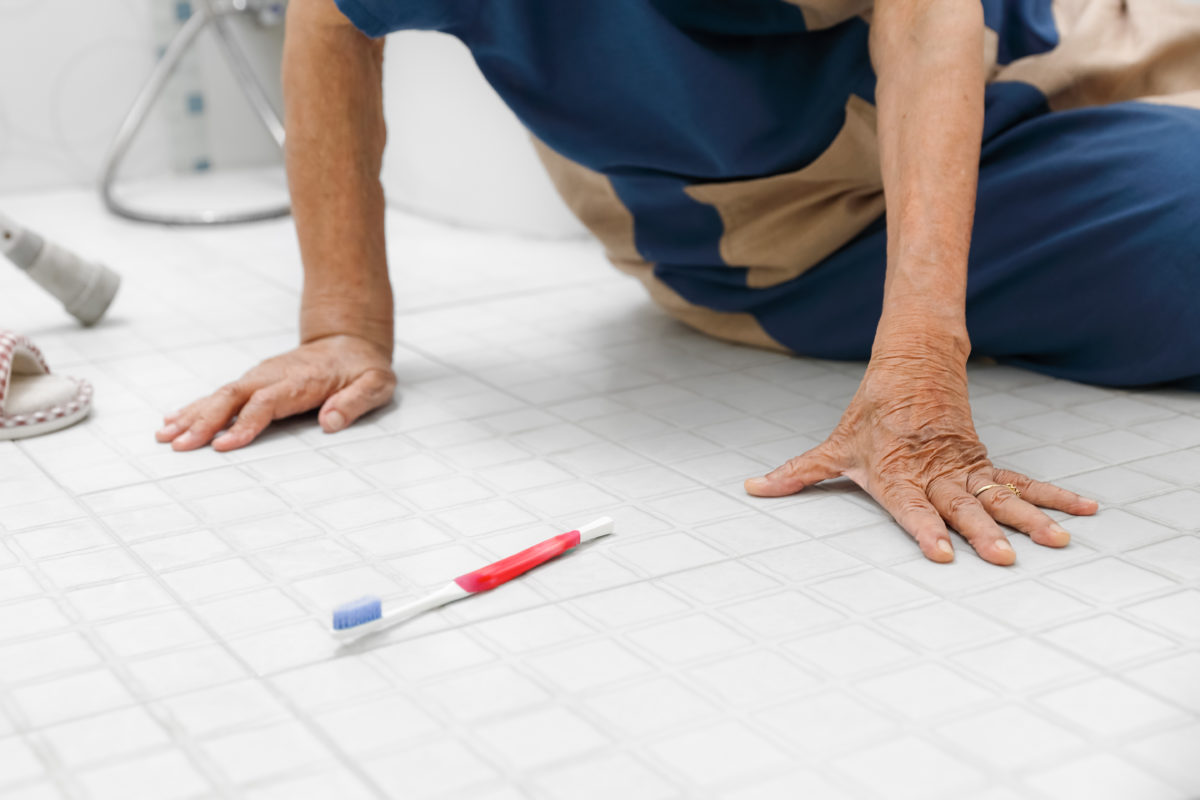Every year more than 200,000 people visit emergency rooms because of injuries suffered in the bathroom, and more than a third of these injuries occur while people are bathing or showering. According to the National Institute on Aging, 80 percent of falls suffered by individuals ages 65 and older occur in the bathroom.
It’s not hard to see why. From wet floors and scalding hot water to medication containers, cleaning products, and small appliances, potential dangers lurk in every corner.
Fortunately, some simple bathroom injury prevention measures will go a long way.
13 Bathroom Injury Prevention Tips to Keep in Mind
The following bathroom injury prevention tips may help keep individuals of all ages safe in your home.
1. Install safety bars/grab handles on the walls and in the tub.
2. Place non-slip mats inside the tub or on the shower floor.
3. Add non-slip decals on the bathroom tile.
4. Keep the bathroom, shower, and bathtub floors clean, as dirt and mildew will make floors more slippery.
5. Make sure that soap, shampoo, conditioner, towels, and any other bathing items are easy to reach. Check to make sure they are available before getting into the shower in order to avoid getting out to obtain them.
6. Consider removing the bathtub completely to avoid the tripping hazard. Replace it with a walk-in shower that does not have high ledges that seniors would have to step over.
7. Place a safety seat in the shower.
8. Make sure cold and hot water knobs in the shower and bathroom sink are clearly labeled.
9. Lower the temperature on your hot water heater to prevent scalding, especially if you have young children or seniors in your home. The skin of older individuals is thinner, so it can scald quickly.
10. If you have young children in the home, ask your pharmacist to give you childproof caps for medications. Keep the medications out of children’s reach.
11. Keep cleaning products separate and away from items such as mouthwash.
12. Remember that water and electricity don’t mix, so be careful when using electric razors, hair dryers, and hair curlers in the bathroom.
13. Regularly check the integrity of the caulking around the bathtub and toilet, and fix any leaks promptly.

Keep a First Aid Kit in the Bathroom
Despite your greatest efforts, accidents can happen. It’s best to keep first aid kits in multiple areas of the home, including the kitchen, bathroom, garage, and any workshops you may have. In most cases, you are more likely to recover completely from a burn, cut, or injury if you implement proper first aid measures quickly.
According to the American Red Cross, a basic, household first aid kit for a family of four should include:
- 2 absorbent compress dressings (5 x 9 inches)
- 25 adhesive bandages (assorted sizes)
- 1 adhesive cloth tape (10 yards x 1 inch)
- 5 antibiotic ointment packets (approximately 1 gram)
- 5 antiseptic wipe packets
- 2 packets of aspirin (81 mg each)
- 1 emergency blanket
- 1 breathing barrier (with one-way valve)
- 1 instant cold compress
- 2 pairs of large, nonlatex gloves
- 2 hydrocortisone ointment packets (approximately 1 gram each)
- 1 3-inch gauze roll (roller) bandage
- 1 roller bandage (4 inches wide)
- 5 3 in. x 3 in. sterile gauze pads
- 5 sterile gauze pads (4 x 4 inches)
- Oral thermometer (non-mercury/nonglass)
- 2 triangular bandages
- Tweezers
- Emergency First Aid guide
Make a list of medications everyone in your household uses, and place it in the first aid kit. Paramedics or family members can refer to the list if needed.
Check the kit regularly and replace any used or outdated items.
To treat a hand, wrist, or elbow sprain, burn or other injury, contact one of our Arora Hand Surgery offices in southeast Michigan to make an appointment.
If the injury is severe, call 911 or go to your nearest emergency room immediately.













